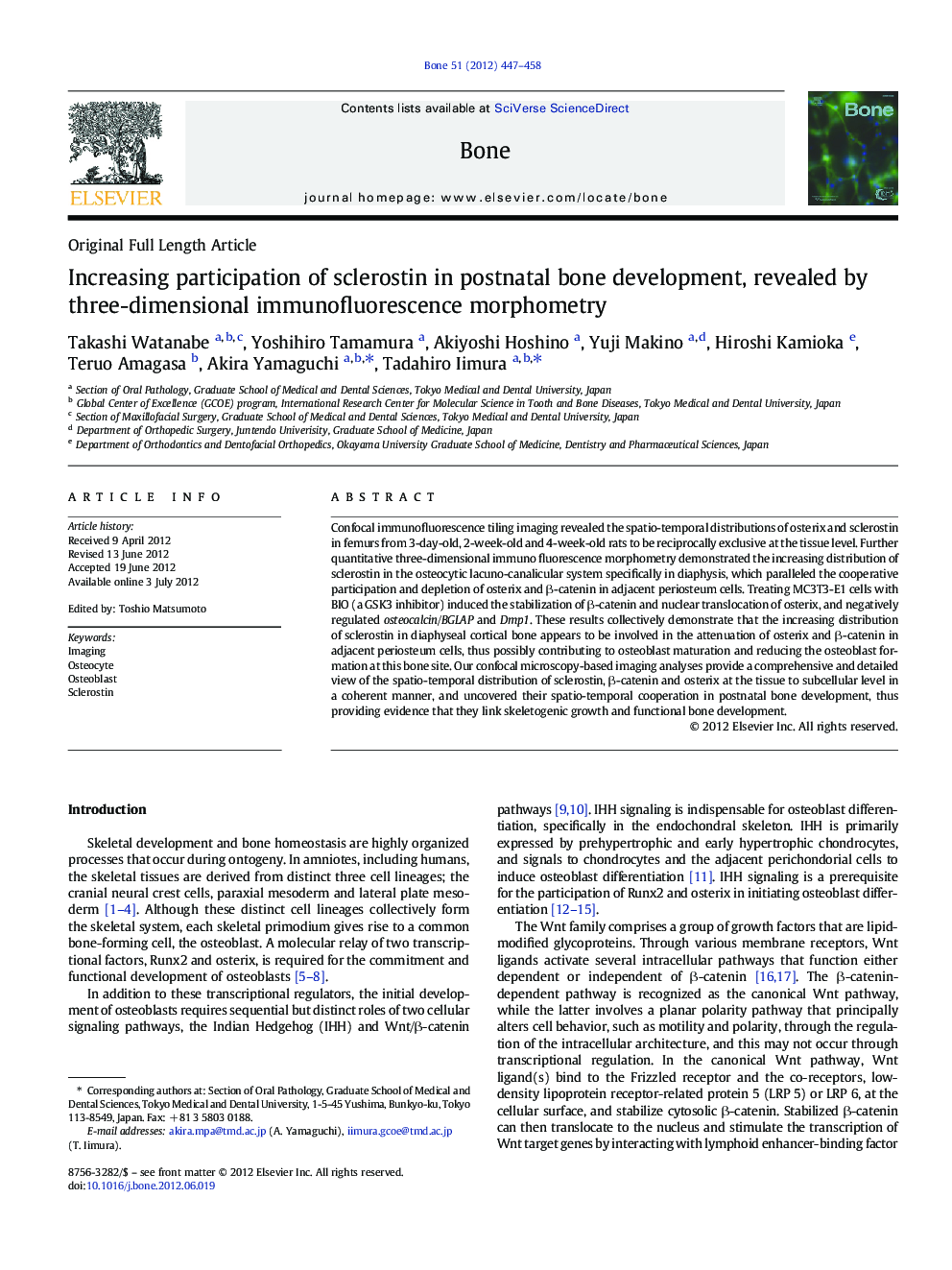| Article ID | Journal | Published Year | Pages | File Type |
|---|---|---|---|---|
| 5890775 | Bone | 2012 | 12 Pages |
Confocal immunofluorescence tiling imaging revealed the spatio-temporal distributions of osterix and sclerostin in femurs from 3-day-old, 2-week-old and 4-week-old rats to be reciprocally exclusive at the tissue level. Further quantitative three-dimensional immuno fluorescence morphometry demonstrated the increasing distribution of sclerostin in the osteocytic lacuno-canalicular system specifically in diaphysis, which paralleled the cooperative participation and depletion of osterix and β-catenin in adjacent periosteum cells. Treating MC3T3-E1 cells with BIO (a GSK3 inhibitor) induced the stabilization of β-catenin and nuclear translocation of osterix, and negatively regulated osteocalcin/BGLAP and Dmp1. These results collectively demonstrate that the increasing distribution of sclerostin in diaphyseal cortical bone appears to be involved in the attenuation of osterix and β-catenin in adjacent periosteum cells, thus possibly contributing to osteoblast maturation and reducing the osteoblast formation at this bone site. Our confocal microscopy-based imaging analyses provide a comprehensive and detailed view of the spatio-temporal distribution of sclerostin, β-catenin and osterix at the tissue to subcellular level in a coherent manner, and uncovered their spatio-temporal cooperation in postnatal bone development, thus providing evidence that they link skeletogenic growth and functional bone development.
⺠We quantitatively examine spatiotemporal distribution of sclerostin in developing postnatal bone. ⺠We provide a unique way to quantitatively measure the distribution pattern of molecules by three-dimensional immunofluorescence morphometry. ⺠Changes in the spatiotemporal distribution of sclerostin suggest its regulatory roles in postnatal bone development.
